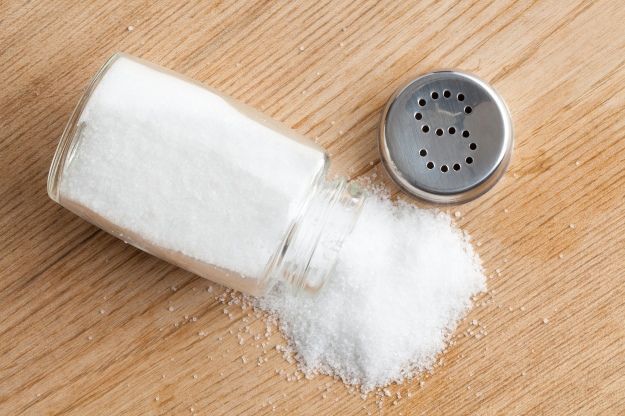If you’re like most, you probably eat too many high sodium foods every day. And if you’re not one who douses your food with the shaker at each meal, you’re still probably consuming too many other high sodium foods – snacks, beverages, fast food, frozen food and packaged food.
Actually, according the Department of Health and Human Services, 90% of all Americans eat too much salt. And that high salt intake is responsible for a host of health concerns. Most know that high sodium intake drastically raises blood pressure, but it also affects heart disease, osteoporosis, kidney disorders, dehydration and swelling.
Seems that tasty white stuff we sprinkle on our food is causing more harm than good. But how much is too much?
According to the United States Department of Agriculture, people should consume no more than 2,400 mg of sodium per day. That’s only about 1 teaspoon. However, the American Heart Association recommends only 1,500 mg per day. Most Americans consume more than double that. And they’re usually shocked to find it’s not always hiding in their salt shaker or what they pick up from a drive-thru. It’s in very common foods and condiments.
Here are 10 everyday products with high amounts of hidden sodium:
- Breakfast cereals – more than 350 mg per cup
- Pasta sauce – more than 500 mg per ½ cup
- Frozen pancakes – nearly 200 mg per pancake
- Vegetarian burger – 700 mg per patty
- Ketchup – 190 mg per tablespoon
- Bread – 200 mg per slice
- Vegetable juice – 480 mg per 8 ounces
- Salad dressing – nearly 250 mg per tablespoon
- Frozen pizza – 1,200 mg per serving
- Seasoned rice – 1,250 mg per cup
If sodium is in everything we buy, how can we avoid it? Here are 10 tips to keep in mind when shopping:
- Choose fresh fruits and vegetables from the produce section instead of canned
- Buy dried peas and beans instead of canned
- If you buy canned fruit, make sure it’s packed in 100% juice or water
- If you buy canned vegetables, look for ones that are labeled no salt added, reduced sodium or low sodium
- Canned vegetables that are high in sodium, can be rinsed with a strainer before cooking
- Use unsalted butter when cooking or baking
- Don’t add salt to water when boiling pasta or rice
- Limit processed foods that are salted or cured – bacon, hot dogs and deli meats
- Make your own salad dressings with vinegar, oil, herbs and yogurt
- Limit fast food and pre-packaged meals
Although foods high in sodium generally seem to taste better, they are definitely not better for your health. By gradually reducing your intake of these high-sodium foods, your body will adjust and soon you’ll be enjoying the taste – and the health benefits – of trading high-sodium versions for ones with lower amounts.
Sources
http://www.3fatchicks.com/7-health-risks-of-eating-too-much-salt/
http://healthyeating.sfgate.com/usda-guidelines-sodium-intake-7839.html
http://www.health.com/health/gallery/0,,20365078_6,00.html
Related Article

Join the Discussion
0 Comments